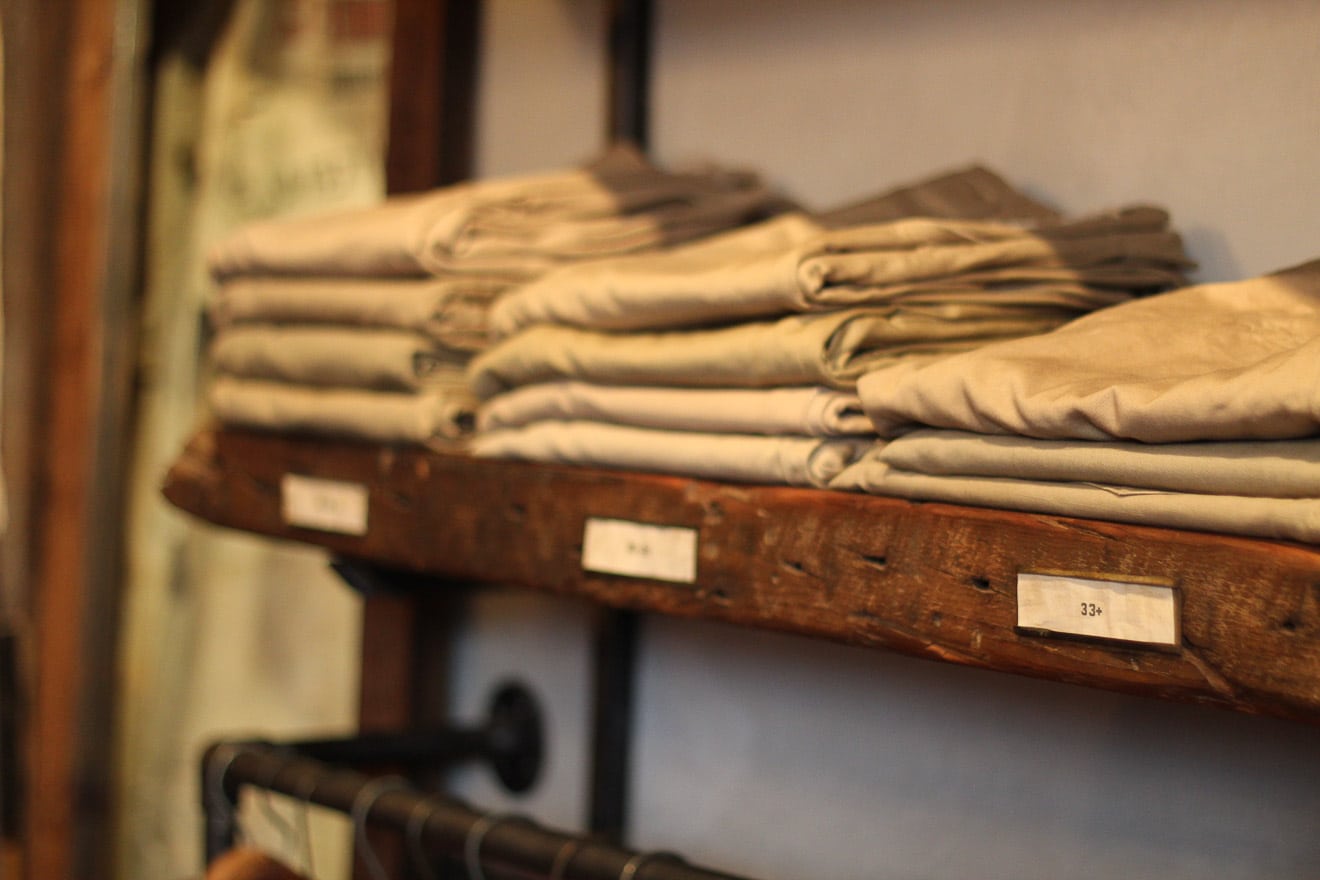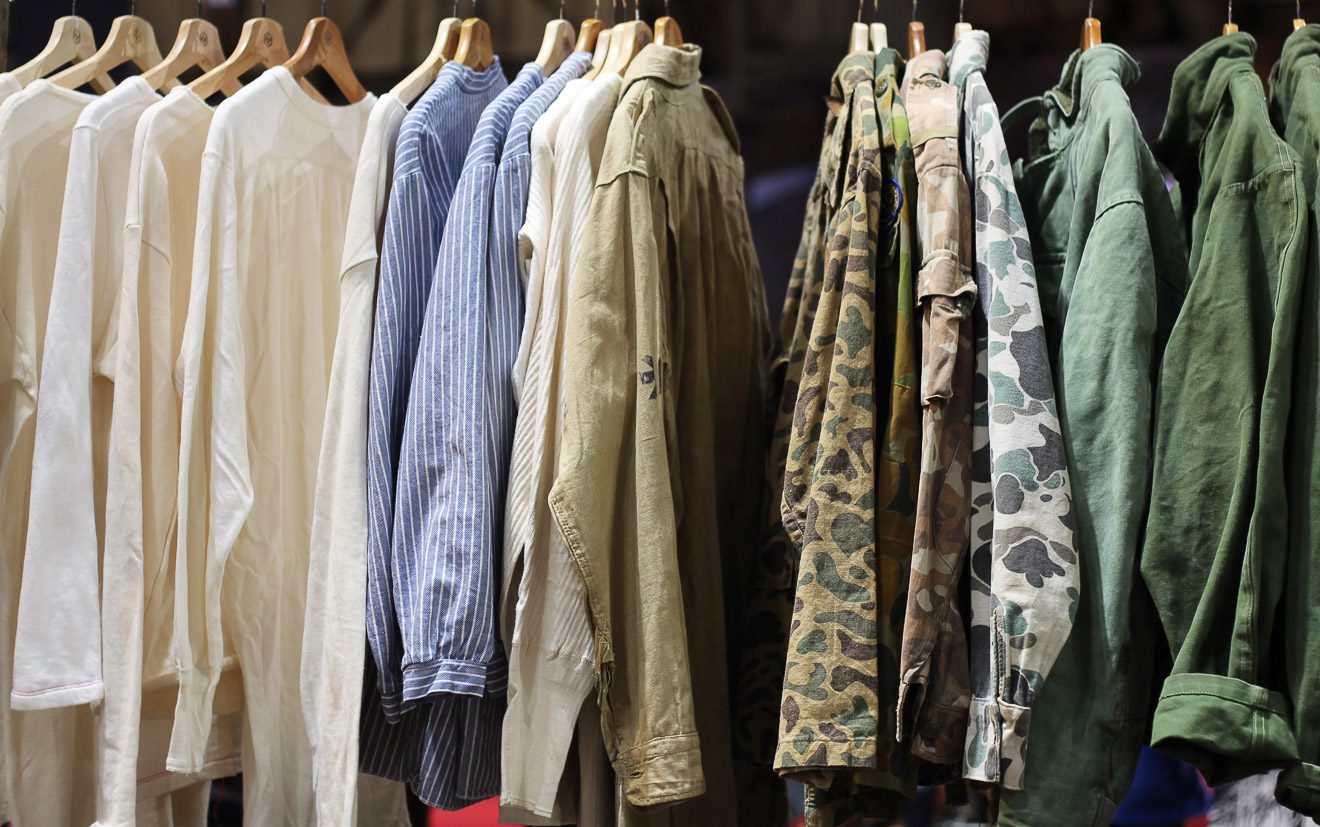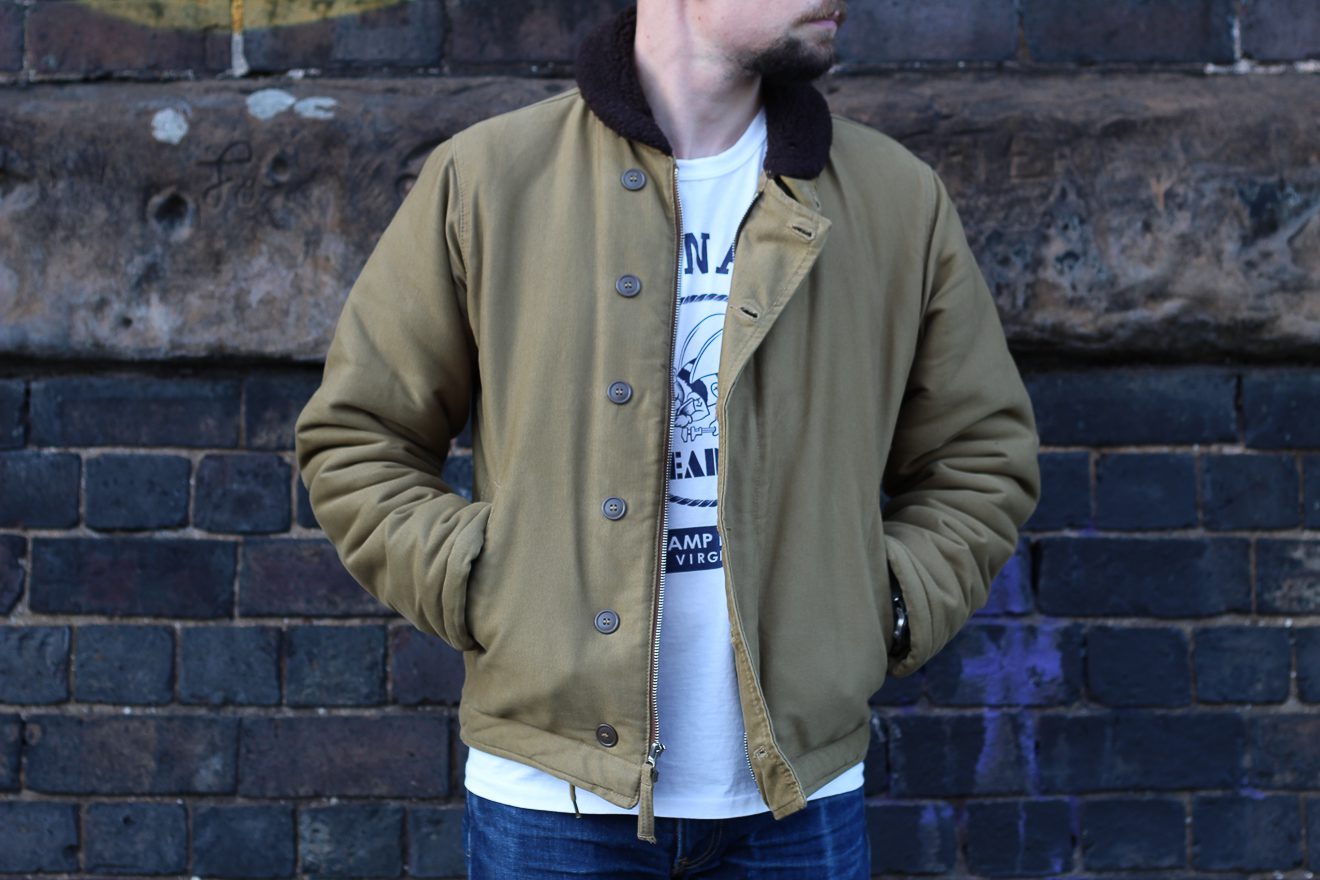This is the first guest post by Will Varnam aka @rugged_style in a new series about vintage military gear he’s going here on Denimhunters.
Why Vintage Military Design Has Had Such a Seismic Impact on Menswear
When we think about well-crafted denim—or any product for that matter—we may think about functionality, materials, quality of construction, practicality or design. We may search for a garment that can withstand the elements, is constructed from a high-quality fabric, is practically designed for an outdoor pursuit or just looks plain ‘cool’.
You would be forgiven for thinking that these pre-requisites were a result of the modern age. But they’ve influenced the design and adoption of military uniforms for decades, even centuries.
Originally designed to confront (or in some cases avoid) the enemy on the battlefield, military uniforms were born out of functionality, practicality and good design. Understandably, the civilian world soon realised the merit of such attributes and military wears began to invade the world of fashion, dating back as early as the nineteenth century.
Holly Brubach of the New York Times goes as far to say that the imitation of the military uniform has triumphed over the original, with reproductions and reinterpretations continuing to appear on the high street, catwalk, and alleyways of Harajuku.
We’re going to delve into the history books and take a look into the heritage of military design, its impact and where it’s heading. From Okinawa to Olive Drab, Pearl Harbor to Peacoats, get your marching orders and fall in.
Sartorial Presence
From full dress regalia to jungle fatigues, military clothing has become one of the most enduring trends in civilian dressing and one of the biggest stories in the history of fashion according to Timothy Godbold, author of ‘Military Invades Fashion’.
Some of the earliest instances of military influence over fashion can be traced back to the era of Napoleon, and in the words of Colin McDowell, “Armies around the world have long understood the importance of an impressive sartorial presence.” From counterculture to couture, high street to high fashion, streetwear to vintage, it’s fair to say that many of us are ‘dressed to kill’ with accents of military design in our wardrobes.
It’s no secret that designers including Ralph Lauren, Massimo Osti, or Hardy Blechman have long favoured military vintage as design inspiration. But a quick flick through Instagram shows a rising crop of industry insiders and consumers who are raising the profile of military vintage and design in the twenty-first century.
This renewed interest in vintage military garments has undoubtedly coincided with the rise of heritage menswear. But it feels like more than a fashion fad or seasonal trend. There is substance to the fixation on fatigues, depth to the discourse on camouflage patterns.
A visit to any website of a leading heritage brand inevitably includes a salute to military design. Whether it’s a deadstock WWII era ‘Talon’ zipper, military-inspired patch or the use of original fabric, the accents are recognisable and desirable.
Some brands such as The Real McCoy’s or Eastman Leather Clothing have dedicated followers who are driven by the details and accuracy the brand prides themselves on. Many companies are also well known for their vintage archives, ensuring the end product remains faithful to the original and authentic to period production.
History and Heritage
My first steps into the world of military vintage were typical of a young boy who liked to play ‘army’ and wear a camouflage jacket. Fast forward to today and I’m still wearing khaki and watching war movies. I grew up during a time when veterans of WWII were in their later years and popular culture was keen to capture the recollections of ‘The Greatest Generation’ by way of film, television and books.
For me, ‘Saving Private Ryan’ and ‘Band of Brothers’ combined with a disposable income from a weekend job, allowed me to fuel my passion for all things green. This started out innocently with a ‘combat jacket’ (a well-worn M65) and lead to a modest collection of military vintage from WWII.
My initial interest in vintage military garments was focused solely on their historical context. But as years past and my passion for menswear grew, I began to understand why some of these garments were regarded as time honoured classics. The M65 is still as relevant on the streets today, as it was on the battlefield at Khe Sanh.
It’s this same understanding and appreciation that has lured many fashion and style enthusiasts to flea markets, archives and showrooms around the world in search of that perfect military piece. But what else has led to this renewed fixation and interest in vintage military garments?
Hollywood has arguably always played a role going back to the post-war period, with stars such as Steve McQueen, John Wayne and Frank Sinatra sporting everything from an A-2 flying jacket to a P-41 fatigue shirt.
The rise of consumer interest in ‘vintage’ has also encouraged and raised awareness of wearing garments which were previously considered ‘second hand’ into the mainstream.
It’s also undeniable that Japanese culture has contributed to the current state of play; whether through contributions to the menswear publication world (from Popeye to Hail Mary), their forward-thinking approach to fashion and archetypal style, to an obsessive collecting mentality.
As Alec Banks at Highsnobiety acknowledges, the military classics we have in our wardrobes don’t merely take up real estate, they are cornerstones of menswear. They are ‘fail safes’, reliable and perform time and again. Whether this is a khaki chino, a navy peacoat or a leather flying jacket, these are garments which all others are measured against.

Military Invades the Civilian Wardrobe
Before military vintage was ‘cool’, it was cheap and accessible with a surge of ‘surplus’ flooding the civilian market following the end of the Second World War. A large number of uniforms and equipment found their way to the civilian wardrobe from government warehouses full of left-over stock in the post-war period.
This continued throughout the 1960s and still exists to the present day. Some garments would become synonymous with sub-cultures, such as the ‘fishtail’ parka made famous by the mods of London and Brighton, further cemented by films such as Quadrophenia and bands like The Who.
Men and women also wore military clothing as a sign of protest and rebellion during the anti-war movement of the 1960s and 70s, symbolising their dissatisfaction with the establishment and political agenda.
The twentieth century also saw a rise in subcultures which adopted vintage military garments as their own uniform; from punks and mods to hippies and hip-hop MCs.
This adoption of military style continues into the twentieth century with camouflage patterns becoming synonymous with streetwear giants such as BAPE or Supreme and designers like Nigel Cabourn continuing to re-invent vintage military garments with a contemporary focus.
Strategy and Tactics
Over the coming months, I’m going to delve deeper into the world of vintage military design here on Denimhunters; focusing on the people, products and influences which has shaped menswear in the twenty-first century.
I’ll be profiling iconic vintage military garments, looking at the brands who are re-interpreting the classics and take a look inside some of the world’s leading vintage archives. So stay tuned, get your M65 ready and lace up your boondockers.
Denimhunters is enlisting!
Ready for more stories about vintage military? Read Will’s second guest post about the N1 deck jacket.



Fantastic introduction. Looking forward to following this series.
military clothes are so much in fashion, the way designers designed is so fabulous, great intro, surely want more content like this, great post